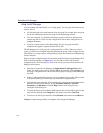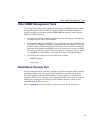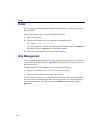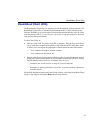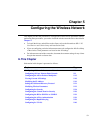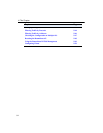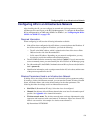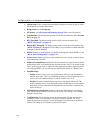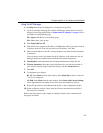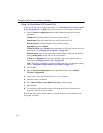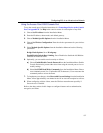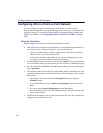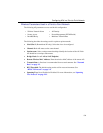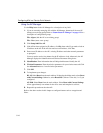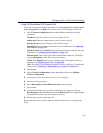
Configuring APs in an Infrastructure Network
5-4
• Station name: Select a unique name that helps identify the location of the AP. Each
AP should have a unique station name.
• Bridge Mode: Set to Workgroup.
• AP Density: See AP Density and Roaming on page 2-8 for more information.
• Transmit Rate: The default setting works well in most environments. See “Transmit
Rate” on page 2-5.
• RTS Threshold: The default setting works well in most environments. See
“RTS/CTS Protocol” on page 2-9.
• Remote RTS Threshold: The default setting works well in most environments. See
“RTS/CTS Protocol” on page 2-9. This setting is only available on a RoamAbout R2
managed by the AP Manager.
• DTIM: In nearly all environments, you should not change the default DTIM of 1. See
“802.11 Power Management” on page 2-11.
• Secure Access: Enable to prevent clients without the correct wireless network name
from connecting to this AP.
• Multicast Transmit Rate: Identifies the desired transmission speed for the broadcast
and multicast traffic as forwarded by the AP to the wireless LAN. You should use the
lowest speed that you want to support. If using applications that use multicast traffic
(for example, IGMP), you can increase this rate from the default of 2 Mbit/s Fixed.
• IntraBSS Relay:
— Enable: Allows wireless users associated with an AP to see and communicate
between each other. This is accomplished by taking a multicast packet from one
wireless user and rebroadcasting it so that all wireless users see it.
— Disable: Prevents communication between users associated with an AP. This
mode is intended for use in the ISP market where the ISP does not want separate
households to browse the Network Neighborhood and see other customers and
their hard drives.
• Medium Density Distribution: Enable it to have the AP distribute its AP Density
(low, medium, high, minicell, microcell) to the clients. This setting is not available
from the console ports.
• Load Balancing: Forces wireless clients to associate with APs that are least busy,
resulting in a more even distribution of client associations between APs. Load
balancing increases the network's overall throughput. Load balancing is enabled by
default. This setting is not available from the console ports.



